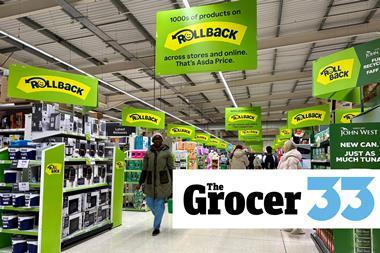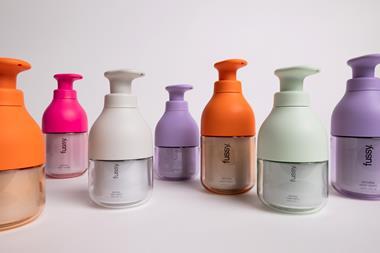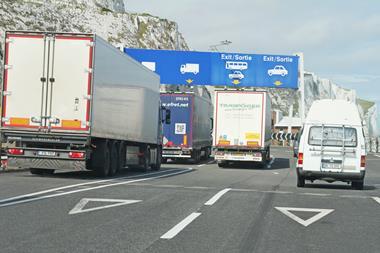This shows that, no matter how great the above-the-line advertising, new product development and funky new packaging, when it comes to getting batteries into consumers' hands, work in store is vital.
Yet replenishing the battery fixture is a time consuming, and let's face it, not very easy job thanks to the plethora of types.
And, if it is bad for store staff, just think how confusing it is for shoppers.
"You need to make it easy for staff to reload, so that consumers can find what they want easily, so that you can sell more," says Charles Kessler, managing director of POP company Kesslers International which has created displays for Duracell among others.
"Battery brands have to promote themselves at an incredible number of points of sale. There is a real issue when it comes to making the product shoppable."
Energizer is one company that has tried to overcome this problem through shopper behaviour research. It appointed retail research and design company ID Magasin to film shoppers interacting with the battery fixture at Asda's West Bridgford store in Nottingham.
"The main motivation behind the project was the feeling that we were losing sales at the fixture," explains Energizer's account manager for Asda Tom Jarratt. "Consumers were confused and didn't like the fixture."
ID Magasin compared conversion rates at three battery fixture locations (checkout, mid-aisle and a quad location) and filmed shopper behaviour at the quad stand. It also undertook store exit interviews.
The results showed that visibility was a major issue. Only 6% of shoppers who walked past the fixture noticed it. Of those 6%, one third interacted with the fixture and nearly all made a purchase.
"Our first conclusion was that we needed to attract and invite shoppers to the fixture," says Jarratt. "We need to cut through the noise in store to achieve stand out, for example using 3D."
Filming also showed that shoppers were clearly confused. When they did start interacting with the fixture it took 49 seconds to make a choice, while those who interacted with more than one side of the unit took one minute 33 seconds to choose.
"People do not buy batteries very often so we need to give them more help, through usage guides and icons rather than words," says Jarratt. "We need to help them to buy the right product for the appliance in which they will be putting the battery."
Exit interviews also showed shoppers think retailers do not offer a full selection of batteries, while 52% did not recall seeing the fixture at all.
The main reasons for buying batteries were for toys, remote controls and radio clocks but shoppers also expected to see specialist batteries for cameras, watches and hearing aids.
Energizer intends to use the findings from this exercise in future fixture development with its customers.
{{FOCUS ON }}
Yet replenishing the battery fixture is a time consuming, and let's face it, not very easy job thanks to the plethora of types.
And, if it is bad for store staff, just think how confusing it is for shoppers.
"You need to make it easy for staff to reload, so that consumers can find what they want easily, so that you can sell more," says Charles Kessler, managing director of POP company Kesslers International which has created displays for Duracell among others.
"Battery brands have to promote themselves at an incredible number of points of sale. There is a real issue when it comes to making the product shoppable."
Energizer is one company that has tried to overcome this problem through shopper behaviour research. It appointed retail research and design company ID Magasin to film shoppers interacting with the battery fixture at Asda's West Bridgford store in Nottingham.
"The main motivation behind the project was the feeling that we were losing sales at the fixture," explains Energizer's account manager for Asda Tom Jarratt. "Consumers were confused and didn't like the fixture."
ID Magasin compared conversion rates at three battery fixture locations (checkout, mid-aisle and a quad location) and filmed shopper behaviour at the quad stand. It also undertook store exit interviews.
The results showed that visibility was a major issue. Only 6% of shoppers who walked past the fixture noticed it. Of those 6%, one third interacted with the fixture and nearly all made a purchase.
"Our first conclusion was that we needed to attract and invite shoppers to the fixture," says Jarratt. "We need to cut through the noise in store to achieve stand out, for example using 3D."
Filming also showed that shoppers were clearly confused. When they did start interacting with the fixture it took 49 seconds to make a choice, while those who interacted with more than one side of the unit took one minute 33 seconds to choose.
"People do not buy batteries very often so we need to give them more help, through usage guides and icons rather than words," says Jarratt. "We need to help them to buy the right product for the appliance in which they will be putting the battery."
Exit interviews also showed shoppers think retailers do not offer a full selection of batteries, while 52% did not recall seeing the fixture at all.
The main reasons for buying batteries were for toys, remote controls and radio clocks but shoppers also expected to see specialist batteries for cameras, watches and hearing aids.
Energizer intends to use the findings from this exercise in future fixture development with its customers.
{{FOCUS ON }}



















No comments yet